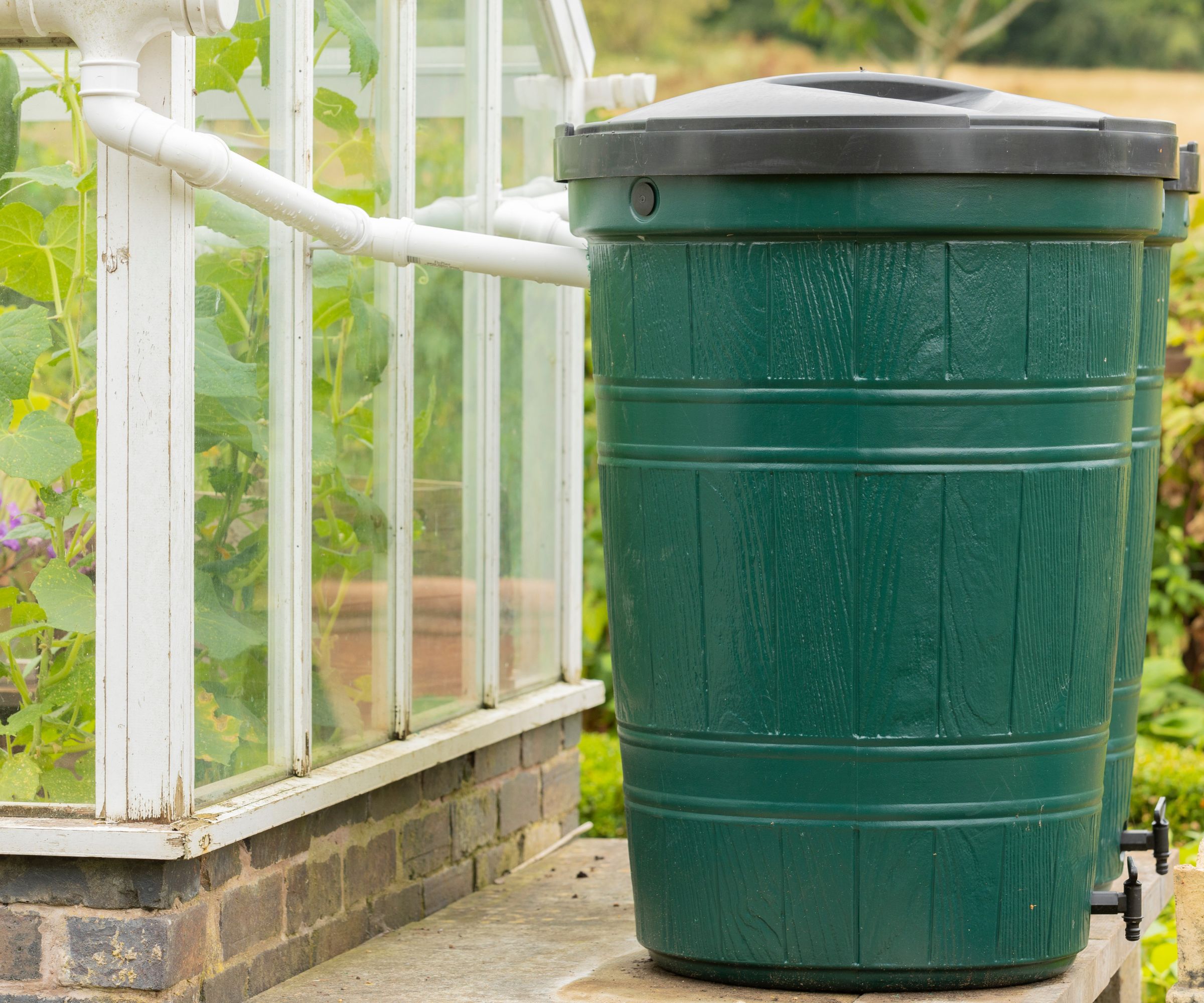
Rain barrels are a great way to save money. These simple containers collect rainwater from your gutters so that you can reuse it on your plants. It makes for free, reliable water, and it's especially useful in drought conditions in summer when local authorities introduce water restrictions
However, rain barrels can be tricky and expensive to install. A few mistakes can make your smart investment more trouble than it's worth – and in some cases, it can even put you on the wrong side of the law.
I spoke to a gardening expert about the most common rain barrel mistakes, and how you can avoid them for free water for your plants.
1. Ignoring the law

By far the biggest mistake people make with rain barrels is ignoring the law. Rain barrels are both regulated and encouraged in different areas of the country, so the regulations vary from state to state and even county to county. For example, rainwater harvesting is illegal in Colorado, but some Texan counties offer a tax incentive for collecting rainwater.
Gardening pro Ryan Farley says 'I’ve found lots of people aren’t even aware that such regulations exist in some areas, so it’s definitely something to educate yourself on first. Check for county, city, and state regulations.'
On top of that, there are HOA regulations. If you live in a homeowners' association, you should check the rules. Some associations ban rain barrels visible from the street, but others ban rain barrels outright, so you need to check or face a fine.
2. Buying a plain plastic barrel

Another mistake is to stick to a plain plastic barrel. Rain barrels are practical additions to a home, but they don't need to be boring. If your rain barrel will be on display – on a patio, for instance – it can be a smart move to buy a disguised rain barrel. These barrels look like large planters or vases, so they don't ruin your garden design with a big chunk of plastic.
Gardening expert Ryan Farley says 'What kind of rain barrel you buy (whether it’s disguised or not) just depends on the look you’re going for – some people with a specific landscaping aesthetic might prefer a disguised barrel that goes better with their decor scheme outdoors.'
A common way to hide a rain barrel is to use a design like this. Made of recycled plastic, it has a shallow basin at the top for small plants, so it looks like a planter instead of a rain barrel.
This barrel has two faucets, so you can hook up multiple hoses and fill two watering cans at once. It's also a sleek sandstone design that will work well for desert homes in the Southwest.
Unlike other models, this rain barrel has a hose built in, which makes it much easier to water a kitchen garden on a patio.
3. Stagnant water

Another mistake is to let your barrel sit around for too long. If you don't keep the water moving, it will become stagnant and start to smell. It can cause bacteria to grow, which can make the water harmful to your plants.
Ryan Farley explains 'Letting water sit too long in your rain barrel can result in stagnant water sitting in the barrel, which can result in bacteria or mildew growth inside your barrel, or insects and other pests being drawn to the barrel.'
Thankfully, this is an easy problem to fix – just make sure you put the water to use. Ryan says 'I recommend emptying the barrel as soon as possible after you’ve collected some water to avoid this, and give your barrel a good scrub once or twice a year.'
4. Wrong height relative to the diverter

When you fit the rain barrel, the top of the barrel must be roughly the same height as the diverter, which diverts the water from the downspout into the barrel. If the barrel is too low, the water will flow back down the downspout rather than the barrel, so the barrel won't fill to the top.
Conversely, if the diverter is too low, the water level can never reach the top o f the rain barrel, so you'll waste a lot of water.
Instead, make sure the top of the barrel is around the same height as the diverter, as this means the barrel can fill to the very top.
Once your rain barrel is installed, there are a few rain barrel problems that can ruin your water supply. Thankfully these all have simply solutions - sometimes it just comes down to make sure the lid fits as tightly as possible to prevent algae forming or slugs and mosquitos finding their way into your water.







